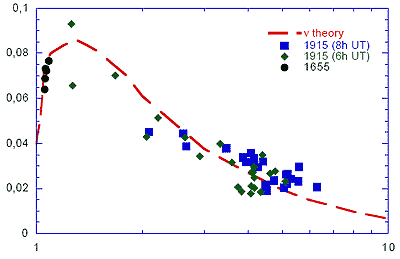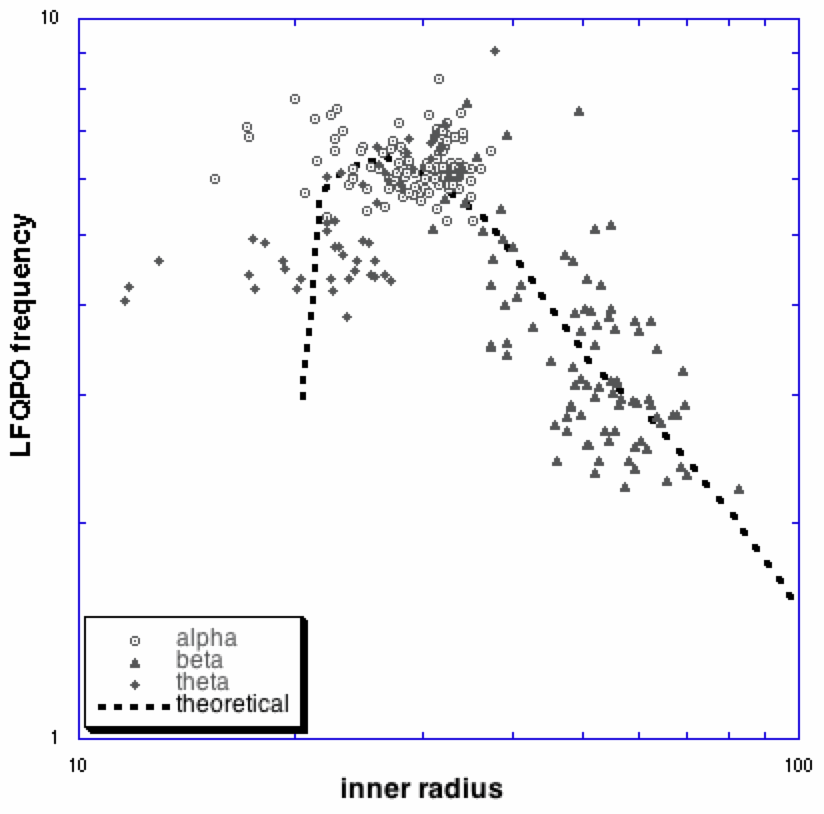


Instability - AEI PN (collaboration with M.Tagger & J.Rodriguez)
By incorporating the general relativistic effect of a last stable orbit in the AEI calculations, the correlation between the frequency of the spiral wave and the inner edge of the disk is reversed as the disk inner edge approaches the last stable orbit. The figure to the right (Varniere et al, 2002) shows the comparison between the theoretical curve predicted by the AEI near the last stable orbit of the black hole and observational data from the microquasars GRO J1655-40 during its outburst and GRS 1915+105 during two successive 30min cycles.
Because of these promising features, we are motivated to further study the AEI as a LFQPO model and compare the predictions to observations.

Further study of GRS 1915+105 (collaboration with V.Mikles)

From the previous study (Varniere et al, 2002) we were not able to find an object going on both side of the correlation. Most objects were behaving similarly to XTE J1550-564 or GRS 1915+105 with a negative correlation while not other object was having a positive correlation as in GRO J1655-40.
The original plot was taking data of GRS 1915+105 only from the beta class we had (9.9.97). Using the data of V.Mikles for the class alpha (pink), beta (red) and theta (black) de GRS 1915+105 we extended our plot and show that, depending on the class GRS 1915+105 show both correlations.